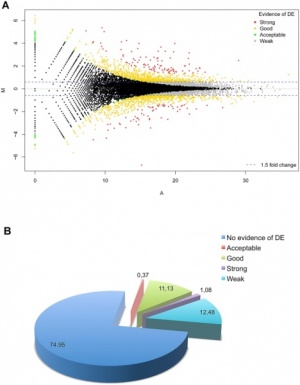User:Z3289829
Lab 4 Online Assessment
- The allantois, identified in the placental cord, is continuous with what anatomical structure?
- Identify the 3 vascular shunts, and their location, in the embryonic circulation.
- Identify the Group project sub-section that you will be researching. (Add to project page and your individual assessment page)
--Mark Hill 09:38, 3 August 2011 (EST) All 3 questions from Lab 1 need to be completed before Lab 2.
Class Attendance
--Z3289829 12:56, 28 July 2011 (EST)
--Z3289829 12:53, 4 August 2011 (EST)
--z3289829 12:21, 11 August 2011 (EST)
Laboratory Assignments
Lab Assessment I
1. Identify the origin of In Vitro Fertilisation and the 2010 Nobel Prize winner associated with this technique.
- The first pregnancy achieved through in vitro human fertilisation of a human oocyte was reported in the Lancet from the Monash university in 1973, although it only lasted a few days. The first successful IVF was carried out in the UK in 1978 by Robert G. Edwards, later awarded the Nobel Prize in Medicine “for the development of in vitro fertilisation” in 2010.
2. Identify a recent paper on fertilisation and describe its key findings.
- Lisa Moran et al. (2011) assessed the effect of a high-protein weight-loss program with exercise pre- assisted reproductive technology (ART) treatment on pregnancy and live birth outcomes in overweight and obese women. The high-protein weight-loss diet resulted in a significantly reduced weight compared with no treatment. A reduction in waist circumference was associated with increased chances of pregnancy. The overall pregnancy rate was 53% for the intervention and control group combined (compared with the expected spontaneous pregnancy rates of <10% per month in this population). These results established the efficacy of lifestyle treatment for overweight women in ART.[1]
3. Identify 2 congenital anomalies.
- Trisomy 21 (Down Syndrome) & Trisomy 18 (Edward Syndrome)
Lab Assessment II
1. Identify the ZP protein that spermatozoa binds and how is this changed (altered) after fertilisation.
- The zona pellucida is an extracellular matrix that surrounds the oocyte and early embryo. It is composed primarily of three to four glycoproteins which have various functions in fertilisation. The protein encoded by zona pellucida glycoprotein 3 (ZP3) is the primary spermatozoa receptor during fertilisation. The binding of ZP3 to sperm activates a range of intracellular signal cascades, which culminate in fusion of the plasma membrane and underlying outer acrosomal membrane (i.e. the acrosome reaction). Fusion of the sperm with the oocyte triggers a release of calcium ions, which results in depolarisation of the oocyte plasma membrane, by which fusion of another sperm is prevented. The rapid depolarisation provides an early block to polyspermy and is mediated by the cortical reaction.
2. Identify a review and a research article related to your group topic. (Paste on both group discussion page with signature and on your own page)
Review Article: Klinefelter Syndrome [1]
Research Article: Klinefelter's syndrome (XXY) as a genetic model for psychotic disorders [2]
Lab Assessment III
1.What is the maternal dietary requirement for late neural development?
2. Upload a picture relating to you group project.
Group Project Contributions
References
- ↑ Moran L., Tsagareli V., Norman R. & Noakes M. (2011) Diet and IVF pilot study: Short-term weight loss improves pregnancy rates in overweight⁄obese women undertaking IVF. Aust NZ J Obstet Gynaecol. 10: 1479-1484

